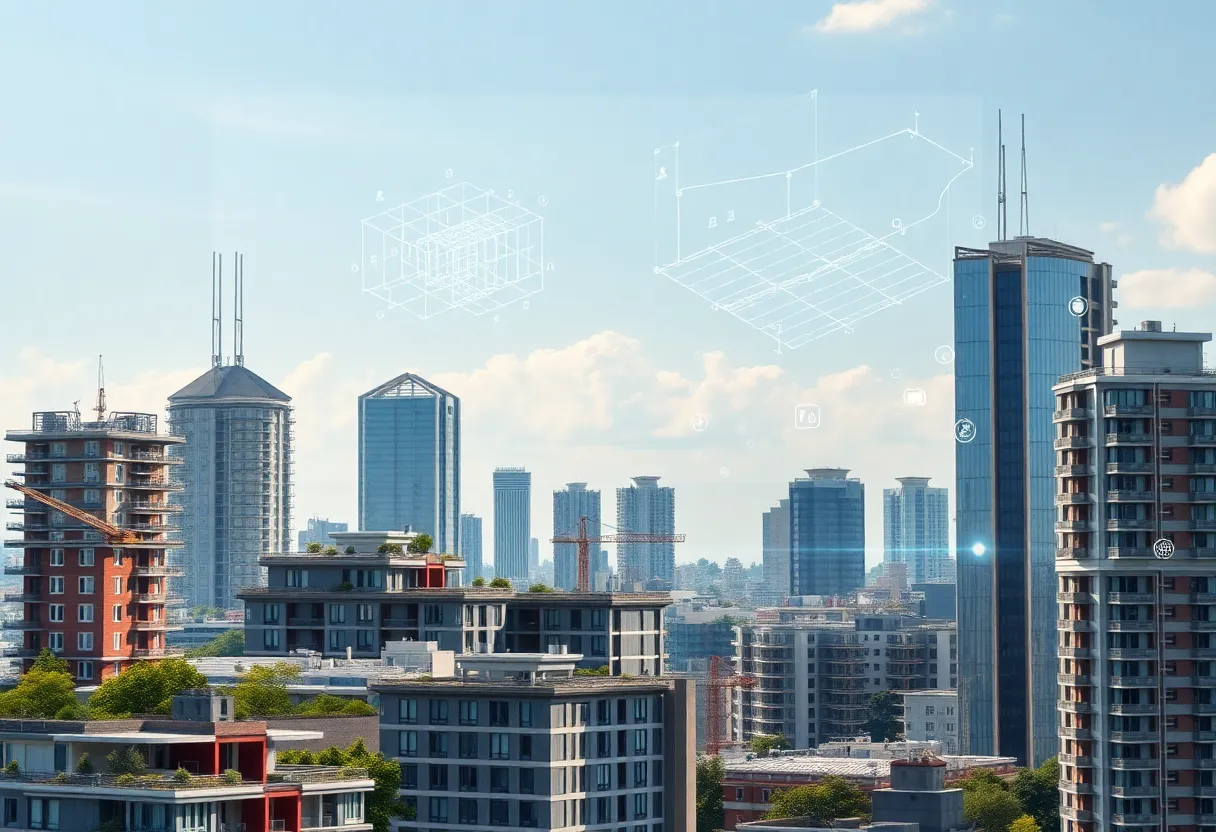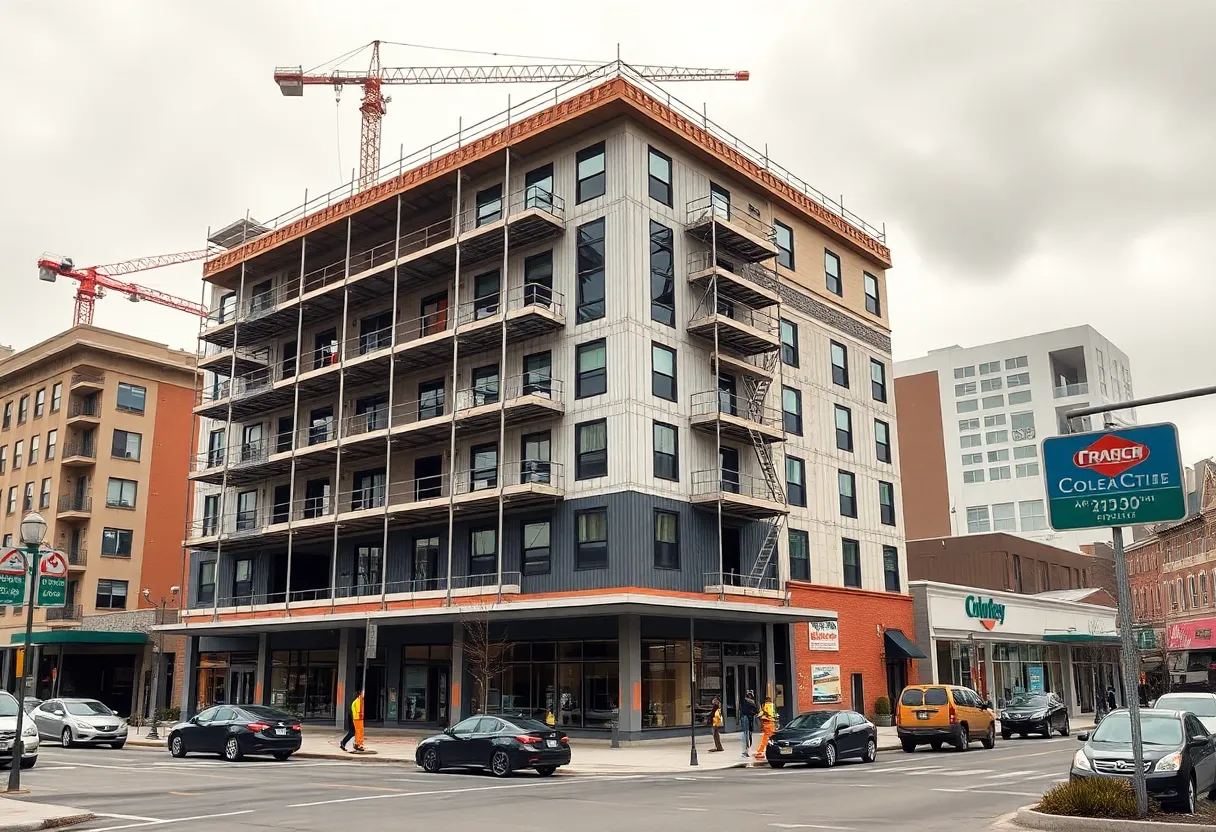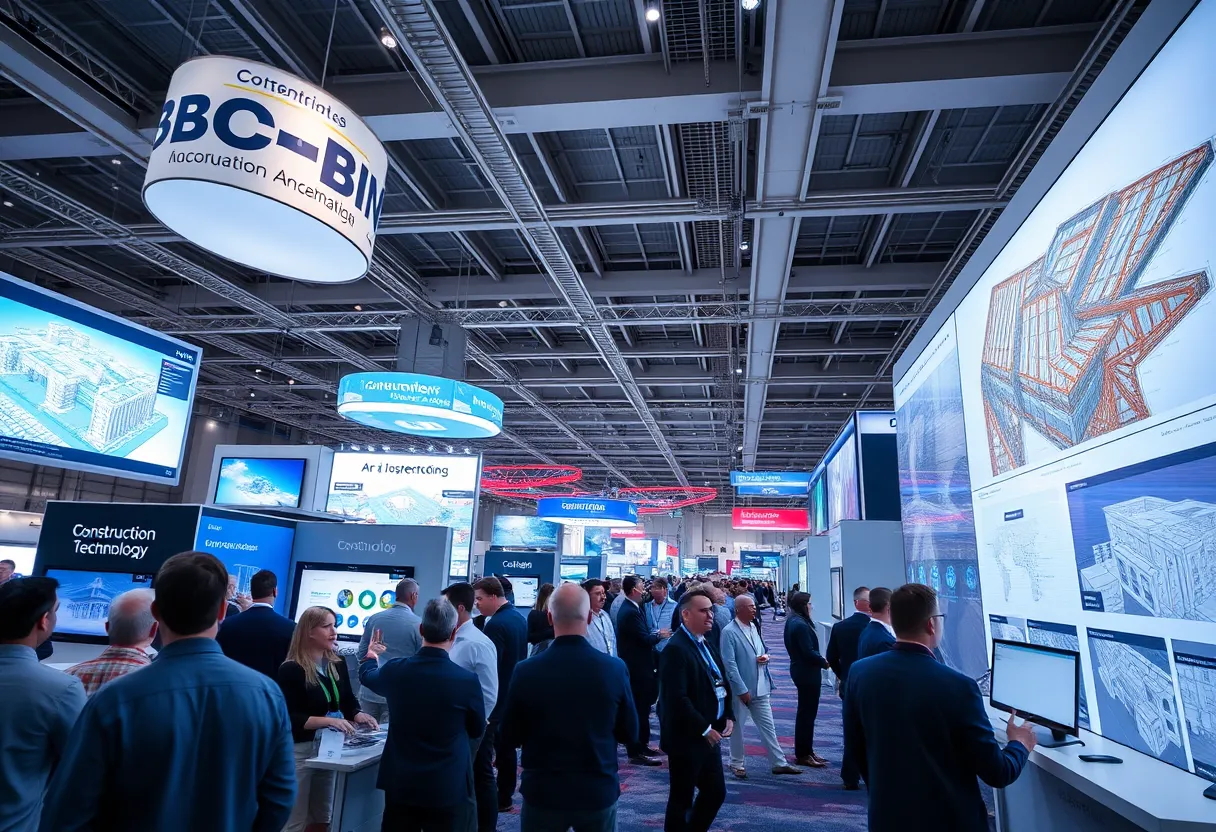Global, September 6, 2025
News Summary
A new forecast finds the global architectural services sector expanding rapidly, with market value rising from USD 184.1 billion to an estimated USD 330.1 billion and a strong compound annual growth rate. Growth is driven by urbanisation, major infrastructure programmes and rising demand for sustainable building design and net-zero targets. Rapid adoption of digital tools — including BIM, AI-driven generative design, VR/AR, digital twins and 3D printing — is reshaping practice, while tighter carbon rules push low-carbon materials and whole-life performance. Cultural refurbishments and events on health-data and AI underline cross-disciplinary opportunities for architects and technologists.
Global Architectural Services Market Poised for Growth as Digital Tools Accelerate Design and Delivery
The Architectural Services market is forecast to expand from around USD 184.1 billion in 2025 to approximately USD 330.1 billion by 2033, a compound annual growth rate near 7.57%. Urbanization, infrastructure development, and demand for sustainable building designs are identified as key drivers. Firms offer a broad spectrum of services—from conceptual design and planning to construction management and post-construction evaluation—and are increasingly enabled by digital tools such as BIM, artificial intelligence, and advanced 3D visualization. The shift toward sustainable, green architecture and net-zero energy building concepts spans both commercial and residential sectors. In 2024, demand for smart city planning and modular construction solutions rose, with AI-driven design helping optimize space and energy use. Client presentations increasingly rely on VR and AR to aid decision-making, while regulatory pressure on carbon emissions and environmental assessments is pushing the use of eco-friendly materials and renewable energy solutions. Looking ahead, the market is expected to evolve toward AI-powered generative design and greater use of 3D printing for models and components, with IoT-enabled buildings adapting to occupancy patterns and weather. Blockchain-based contracts may further improve transparency and efficiency in project management, and ongoing urban density growth is driving interest in vertical and underground architecture.
Market scope, services, and technology trends
The sector is analyzed by service type, end user, and geography. The integration of digital twins, AI-assisted optimization, and real-time visualization is shaping planning and execution. 2024 saw wide adoption of VR and AR for stakeholder engagement, while regulatory frameworks around emissions and environmental impact assessments encouraged the selection of low-impact materials and renewable energy systems. A growing emphasis on vertical and modular solutions aligns with rising urban density, and new approaches to sustainable urban design are helping cities plan for resilience and efficiency.
A health data and AI event in Dublin
Separately, a major technology and health data event was announced for Dublin, focusing on secure, standardized, and interoperable data sharing to improve healthcare delivery across Europe. The program features two tracks—Executive and Technical—and highlights the European Health Data Space and responsible use of AI in clinical and operational settings. The Executive Track will cover implementation strategies and real-world adoption patterns, including a case study on health app initiatives, while the Technical Track will delve into the AWS health data platform portfolio, security, and hands-on workshops on health data platforms and generative AI governance. Participation is free but capacity is limited, and attendees are encouraged to come prepared with relevant equipment for workshops. The event aims to bring together leaders, technical professionals, and innovators to explore data-sharing frameworks, interoperability, and governance in health tech.
Residential architecture highlights and awards context
In parallel, residential architecture has attracted attention through a competition featuring several shortlisted homes. A compact urban family dwelling in a South Dublin site was highlighted for its clever use of a tight footprint, with living spaces arranged on the first floor to maximize daylight on a narrow lot. The design emphasizes energy efficiency and flexibility for a small footprint, with roof lights, an open-plan core, and space-saving features that secure high marks from judges. Other shortlisted homes include a Wicklow restoration described as a New York Loft meets Irish cottage concept, and a Carlow residence built in 2023 that favors views, neutral tones, and natural woods. These entries illustrate how contemporary design blends site constraints with modern materials and energy-conscious strategies.
National Gallery Dublin refurbishment by Heneghan Peng
A six-year refurbishment led by Heneghan Peng targeted circulation improvements among four wings of Ireland’s National Gallery, spanning structures from the 19th to the 21st centuries. A new light-filled courtyard now serves as an entry and orientation hub, with an emphasis on daylighting and visitor flow. Key interventions include restoring white glazed brickwork, re-opening bricked-up windows to reestablish daylight pathways, and adding universal-access elevators. The courtyard features a contemporary sculpture and a dialogue between old and new materials, with poured-in-place concrete elevator cores contrasting against the gray stone of older wings. The project incorporated new roofing, mechanical systems upgrades, and refined color schemes, alongside a redesigned entrance sequence and front lawn that provides accessible access. A second phase will address additional wings and create a continuous indoor public passage linking historic and modern parts of the building. The architects note that working within the constraints of an existing fabric requires careful adaptation, and archival research informed the effort to restore original design intent. Materials and suppliers include metal veneers, glass, daylight controls, and lighting systems, with a focus on maintaining the building’s historic character while improving performance and visitor experience.
Key takeaways
Across these developments, a shared pattern emerges: the Union of heritage sensitivity and modern technology, a focus on daylight and accessibility, and a push toward sustainable, data-enabled design. The architectural services market remains sharply influenced by urban growth, infrastructure investment, and evolving expectations around energy performance, while institutions and public projects increasingly rely on advanced data platforms and governance frameworks to support decision-making and operations.
Frequently Asked Questions
The market is projected to rise from about USD 184.1 billion in 2025 to around USD 330.1 billion by 2033, with a CAGR near 7.6% over the period.
Key technologies include Building Information Modeling, artificial intelligence, 3D visualization, virtual and augmented reality, digital twins, and IoT-enabled systems to improve design efficiency and building performance.
Refurbishments emphasize daylighting, universal access, integration of new materials with historic fabric, and careful restoration of original design cues while updating mechanical systems and energy performance.
| Feature | Description | Relevance |
|---|---|---|
| Market size | Forecasts indicate growth from 184.1B USD (2025) to 330.1B USD (2033). | Foundational metric for investment and planning decisions. |
| Growth drivers | Urbanization, infrastructure, and demand for sustainable designs. | Shapes project types and service demand across sectors. |
| Technology adoption | BIM, AI, VR/AR, digital twins, 3D printing, and IoT. | Informs efficiency, accuracy, and collaboration in projects. |
| Regulatory influence | Emissions rules and environmental assessments drive material choices and design approaches. | Pushes toward eco-friendly and compliant solutions. |
| Notable projects | Heritage and cultural refurbishments, such as national gallery upgrades, alongside contemporary residential designs. | Illustrates balance between preservation, access, and modern needs. |
Deeper Dive: News & Info About This Topic
Additional Resources
- GlobeNewswire: Architectural Services Market Trends and Growth Analysis Report 2024–2034
- Wikipedia: Architecture
- AWS Public Sector Blog: AWS Health Data & AI Day Dublin 2025 — EHDS implementation and healthcare innovation
- Google Search: European Health Data Space (EHDS)
- GlobeNewswire: Architectural Services Business Report 2024 — Global Market Forecast
- Google Scholar: architectural services market 2030
- Irish Examiner: Home & Gardens (compact infill home and national house prize finalists)
- Encyclopedia Britannica: house design
- Architectural Record: National Gallery of Ireland by Heneghan Peng Architects
- Google News: National Gallery of Ireland refurbishment





